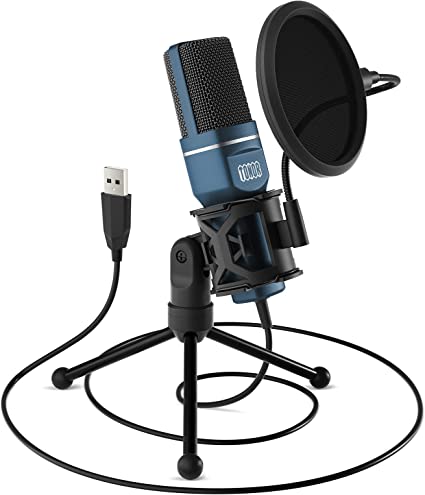A tube condenser microphone is a type of condenser microphone that uses vacuum tubes in its internal circuitry. Condenser microphones are very sensitive and use a thin, flexible membrane called a diaphragm to turn sound waves into electrical signals. Because of their warm, smooth sound, condenser tube microphones are commonly used in recording studios and live shows.
History of tube condenser microphone?
Since the beginning of the 20th century, tube condenser microphones have existed. Early microphones were simple. Non-moving rear plate and a thin diaphragm. Then, a condenser microphone with a current tube was amplified to power a speaker or something else.
Electronic condenser microphone circuits added vacuum tubes in the 1930s. These tubes amplified the diaphragm’s modest electrical signal better than earlier generations. Since then, mics have become more sensitive and smaller. Tube condenser mics were popular in radio studios and other places that needed high-quality audio.
Condenser microphones improved over the 20th century. People still prefer their mellow, pleasant sound, so they’re used in recording studios and live shows. Despite advances in solid-state circuitry, many audio pros favor tube condenser mics.
Types of the tube condenser microphone
Large diaphragm tube condenser microphones: These have a large diaphragm, usually 1 inch or bigger, and are typically used to record vocals, instruments, and other sources where a smooth, warm sound is desired.
Small diaphragm tube condenser microphones: These have a small diaphragm, usually less than 1 inch, and are generally used to record instruments and other sources that need a quick, accurate response.
Multi-pattern tube condenser microphones: These have different pickup patterns, like cardioid, omnidirectional, and figure-8, and can be used in various recording and live performance situations.
Tube condenser microphones with switchable patterns: The user can select from a variety of pickup patterns with the flip of a switch on these microphones. It can be useful if the recording environment or sound source constantly shifts.
Tube condenser microphones with high-pass filters: These have a built-in high-pass filter that can cut down on low-frequency noise or rumble. It can be helpful if the microphone is close to a loud sound source, like a bass amp, or if there is a lot of low-frequency noise in the area (such as a busy street).
Features of the tube condenser microphone
Here are some common features of a condenser tube microphone
- Vacuum tubes: The vacuum tubes that make up a tube condenser microphone’s circuitry make it stand out. These tubes help create the warm, smooth sound that these microphones are known for by amplifying the diaphragm’s electrical signal.
- Diaphragm: The diaphragm is a thin, flexible membrane that turns sound waves into electrical signals. In a tube condenser microphone, the diaphragm is usually made of gold or aluminum, which are both light and electrically conductive.
- Pickup patterns: Most tube condenser microphones have a pattern that tells you where the microphone is pointing. Cardioid, omnidirectional, and figure-8 are all common pickup patterns.
- High-pass filter: Some tube condenser microphones have a high-pass filter built in that can be used to cut down on rumble or low-frequency noise. It can help if the microphone is close to a loud sound source or if there is a lot of low-frequency noise in the area.
- Shock mount: Many condenser tube microphones come with a “shock mount” device that helps keep the microphone from being affected by mechanical vibrations. It can help record studios and other places where vibrations from feet, equipment, or other things could change the quality of the sound.
- Case or carrying bag: Many tube condenser microphones come with an issue or carrying bag to protect the microphone while it is being moved. You can also put the microphone in one of these bags or cases when you’re not using it.
Conclusion
Tube condenser microphones are a type of microphone that is very sensitive and is made up of vacuum tubes. They are often used in recording studios and live performances because of their smooth, warm sound. Tube condenser microphones are usually more expensive and require more maintenance than other microphones, but many audio engineers and musicians like how they sound and are willing to pay more. Also, they tend to be more fragile than other microphones and must be handled with more care. Overall, tube condenser microphones are a good choice for recording high-quality audio. Still, there may be better choices for everyone because they are expensive and must be maintained.




